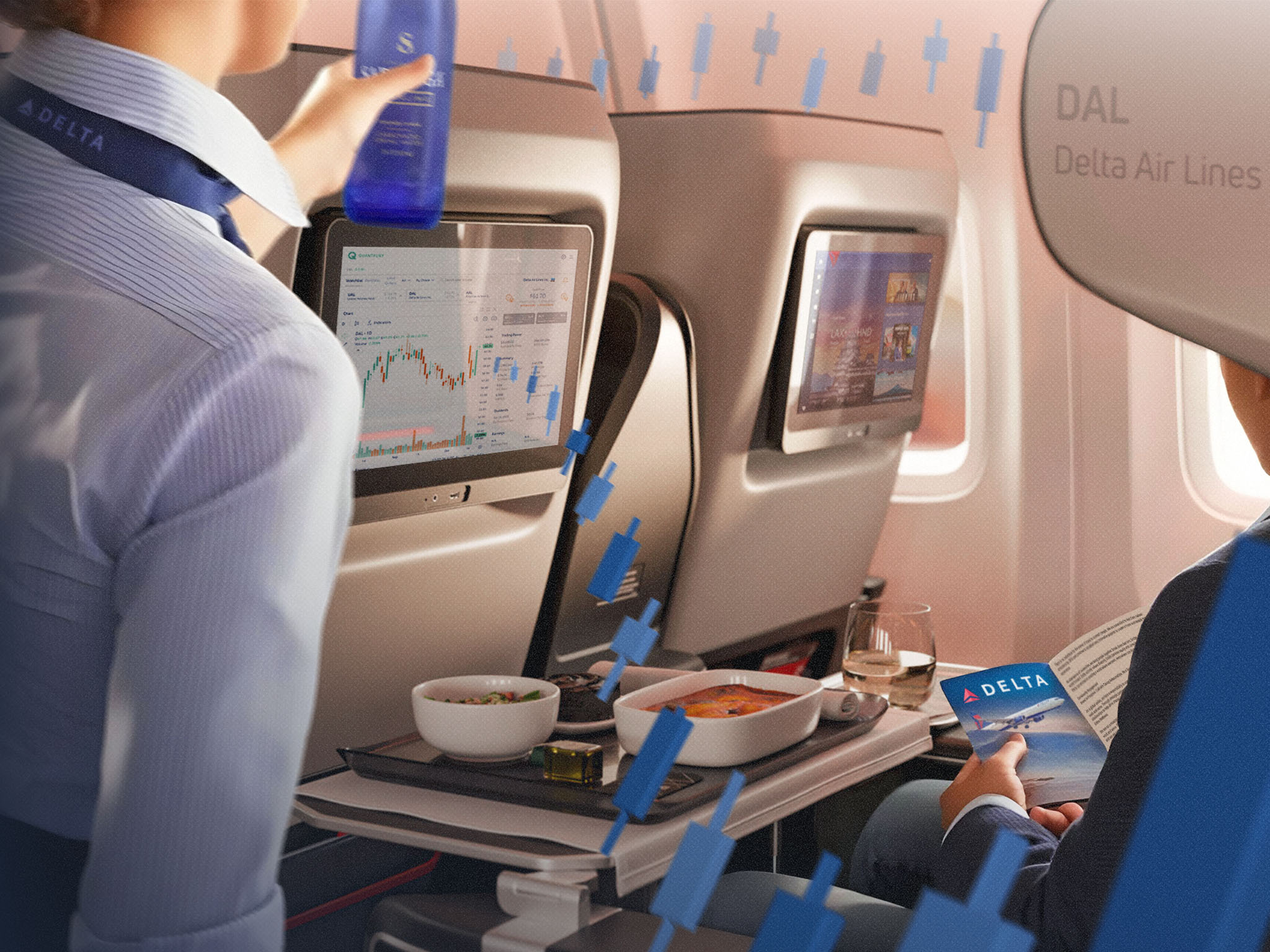Delta Air Lines (NYSE: DAL), the biggest U.S. carrier by market-capitalization, has a stellar business model that’s generating hefty profit.
But given the vagaries of the aviation industry, it’s unclear how much more Delta can “keep climbing” to borrow its tagline.
The company posted revenue of $16.7 billion in the third quarter, up 6% from a year ago. It benefited from its focus on premium products, such as flight seats and airport lounges, as the wealthy continue to shell out for travel. Sales rose 9% for premium seats and 8% for corporate tickets. Seat sales in the main cabin slid 4%. But Delta is happy to focus on the premium sector.
Over the last 10-15 years, the company’s premium products have gone from being loss leaders to its highest-margin products, Delta President Glen William Hauenstein said on its earnings call last week.
Where the growth’s at
“We continue to invest in higher-end products, whether that’s opening up new Delta One lounges
or check-in areas,” he said. “If you look at next year, … most of our growth, if not almost all of it, will be in the premium sectors.”
Earnings per share jumped 10% in the third quarter from a year earlier, and the operating profit margin gained to 10.1% from 8.9%. Delta anticipates revenue growth of 2% to 4% in the fourth quarter, with operating profit margin of 10.5%-12%.
The good news has pushed its stock up 43% in the past six months, well above the S&P 500’s 24% gain.
Delta has a strong history of customer service. It took first place in J.D. Power’s 2025 North American Airline Satisfaction Study for premium economy passengers for the third straight year.
It is consistently near the bottom of the list for the U.S. Department of Transportation passenger- complaint rate among major carriers. Delta gets high marks for its on-time performance, low amount of involuntary passenger bumps, and efficient baggage handling.
Grim reality
But flying is a tricky business. Morningstar analyst Nicolas Owens summarizes well the problems inherent with running an air carrier.
“Airlines rent out seats by the hour on aircraft designed to fly for decades, and their operations and financial results are subject to fluctuations beyond their control,” He wrote. This includes ticket prices, fuel costs, labor costs, weather, and seasonal variation in flyers’ travel plans.
And that’s not the end of the challenges. “The airline business is highly price-competitive, capital-intensive, and labor-intensive, all of which makes it difficult for an airline to generate any profit beyond its cost of capital,” Owens noted.
Indeed, a 2018 study from Industry group IATA estimated that return on invested capital had only approached the industry’s cost of capital once in the last 20 years, never exceeding it.
Owens is impressed with Delta’s industry-leading revenue yield (passenger revenue divided by revenue passenger miles). But, “while we believe Delta will continue to garner premium revenue yields, we see the spread between those yields and its overall costs more closely resembling the industry’s in the long term,” he said.
So Delta’s ascent may not be as steep in the future.




Comments